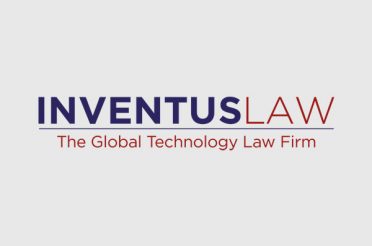By Manya Oberoi
When a company sells any Token on a blockchain to raise money to fund its operations, are those Security Tokens that are subject to securities laws, or are they Utility Tokens that are not covered by securities laws? In SEC v. Ripple Labs, Inc., a federal court in New York said last year that “it depends.” While this may not sound encouraging at first blush, the court’s opinion in fact instructs companies on how to structure tokens so that they are considered as Utility Tokens and not securities.
When Are Utility Tokens?
A Utility Token is an online asset that performs a specific purpose in the ecosystem of a blockchain platform. Utility tokens provide users with access to a product or service offered by the platform that issues them. Such tokens are native to the platform they are used on. Utility Tokens often operate on blockchain platforms that support smart contracts that are self-executing contracts with the terms of the agreement directly written into code. These smart contracts define the rules and conditions of the utility token. For example, the Siacoin Utility Token is used in the Sia ecosystem to buy and sell cloud storage space. Utility Tokens are thus intended to offer holders a right of use within a specific blockchain ecosystem.
Utility Tokens can rise or fall in value. That does not automatically make them subject to securities law, though. One can buy gold, silver, or artwork that may rise or fall in value. That does not make those assets securities, in the way that stocks in the stock market are securities.
When Tokens Are Securities?
Security Tokens, unlike utility tokens, require registration with the Securities and Exchange Commission (SEC), as well as compliance with securities laws. Security tokens represent ownership or investment in real-world assets, that allow the holder to receive profits and exercise rights based such real-world assets. For example, RealBlocks, tokenizes real estate properties and BlockVC issues debt tokens to various investors.
The key to whether a token is a security is known as the Howey Test analysis of “investment contracts.” The Howey Test states that if an asset is an “investment of money in a common enterprise, with a reasonable expectation of profits to be derived from the efforts of others” it is considered a security.
In SEC v. Ripple Labs, Inc, the court applied the Howey Test to Ripple Labs’ token XRP. By way of background, Ripple Labs, Inc. provided a blockchain payment method to process international money transfers using its XRP cryptocurrency. The court clarified that not all digital tokens, such as XRP, automatically qualify as securities. Rather, the contexts in which it is offered or traded may turn it into a securities offering. The court scrutinized three main ways Ripple distributed XRP (i) sales of XRP to big investors or institutions, (ii) sales of XRP through digital exchanges, and (iii) distribution of XRP as payment for services.
The direct sales of XRP to big investors or institutions were deemed investment contracts as they included a common enterprise whereby each institutional buyer’s ability to profit was tied to Ripple’s fortunes. This was because because Ripple received money in exchange for XRP and the pooled funds from these sales were used to support Ripple’s operations. Also, the buyers were sophisticated institutional buyers – and very importantly the written contracts had “lock-up requirements, resale restrictions and indemnification clauses,” among other features.
In contrast, sales of XRP through digital exchanges were not considered securities transactions. These sales did not include contracts with lockup provisions, resale restrictions, indemnification clauses, or statements of purpose, and the court noted the less sophisticated nature of programmatic buyers, who were not necessarily informed about their purchases’ specifics, and who were less likely to expect that XRP would grow in value based on Ripple’s efforts.
Similarly, Ripple’s distribution of XRP as payment for services did not qualify as securities transactions either. In these cases, recipients did not provide money to Ripple in exchange for XRP. Additionally, work performed by employees or third parties was not considered a direct financial contribution to Ripple.
SEC’s No-Action Relief and The Way Forward
For companies issuing tokens, understanding and managing regulatory and compliance risks is paramount. As the digital asset landscape evolves, companies must stay informed about regulatory developments and ensure compliance.
To assuage potential uncertainty amongst companies launching such tokens, the SEC’s No-Action Relief program allows projects to submit requests for SEC “No-Action letters” to ensure compliance with securities law.
The SEC has issued three No-Action Letters. One was to Pocketful of Quarters, another to TurnKey Jet, and another to IMVU, all stating that if certain conditions are followed, their tokens would not be classified as securities. These conditions, though specific to the underlying project do offer guidance and the types of precautions that should be taken by companies, such as the following:
a) Ensure launch funds are not used for platform development: When launching a token, make sure that the funds raised are not allocated for building the platform itself.
b) Provide immediate token utility: Upon selling tokens, ensure they are immediately usable for their intended purpose. This demonstrates the token’s practical utility and aligns with its intended functionality.
c) Implement transfer restrictions on tokens: Limit the transfer of tokens to wallets that are registered with the platform. Ensure that these tokens can only be transferred for their authorized use and between accounts that have been approved by your platform.
d) Conduct KYC/AML checks: Perform Know Your Customer (KYC) and Anti-Money Laundering (AML) checks on all accounts at the time of their initiation and continue these checks on an ongoing basis.
e) Align token purchases with market price: Maintain a direct correlation between the purchase of tokens and their market price. This alignment should reflect the token’s current market value and its utility.
f) Focus on consumptive use of tokens: Ensure that tokens are sold solely for their consumptive use within your application. This approach emphasizes the functional aspect of the token over its investment potential.
g) Market tokens based on functionality: When promoting your tokens, focus on their functionality and utility within the application. Avoid marketing strategies that emphasize the potential for an increase in the token’s market value, as this could mislead about its intended use and nature.



